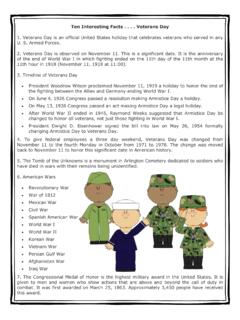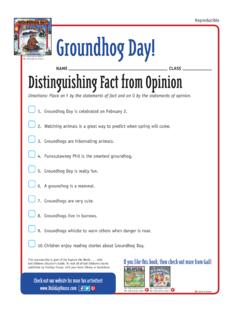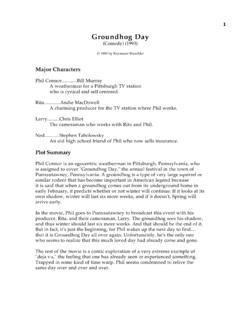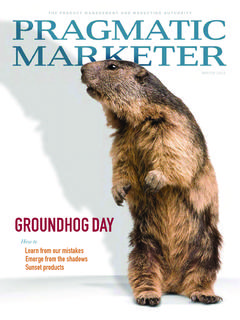Transcription of The History of Groundhog Day - Book Units Teacher
1 The History of Groundhog Day Tradition says that if a Groundhog comes out of its hole on February 2 and sees its shadow, there will be six more weeks of winter weather. If there is no shadow, an early spring is predicted. While the first Groundhog Day was celebrated in 1887 at Gobbler's Knob in Punxsutawney, Pennsylvania, its roots go back much farther. In Europe, one ancient Christian holiday was Candlemas Day. On this day, a clergyman would bless and distribute candles needed for winter. The candles were symbolic of how long and cold the winter would be. This English song explains the rules of Candlemas: If Candlemas be fair and bright, Come, winter, have another flight. If Candlemas brings cold and rain, Go, winter, and come not again.
2 Germans used a similar song: If Candlemas brings wind and snow, Then spring will very soon show. But if it's clear and bright, Then spring won't come so right. Germans expanded on this tradition by selecting a hedgehog as a means of predicting the weather. The hedgehog was awakened from hibernation on February 2 to see if it would see its shadow. In the early 1840's, many German immigrants moved to Pennsylvania. They wanted to keep to their traditions, but hedgehogs were not native to the area. Instead, they chose a Groundhog for the honor. The Groundhog was dubbed with the name "Punxsutawney Phil.". Punxsutawney Phil has been predicting the weather for 120 years. Because nine years records were not kept, he has predicted 99 forecasts of more winter and 15 for an early spring.
3 His predictions have a 39% accuracy rate. According to detailed records kept by the National Climatic Data Center, Punxsutawney Phil has correctly predicted the weather only five times out of the twenty-six years analyzed. Resources Gay Miller



















